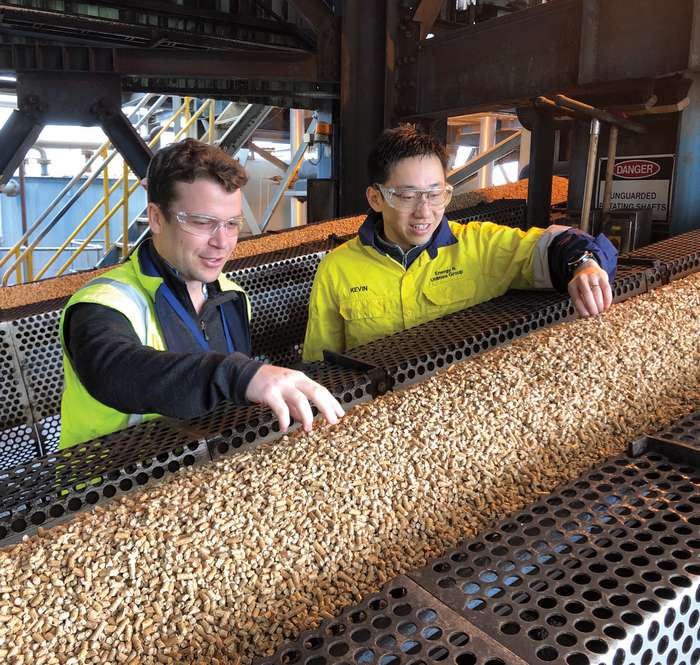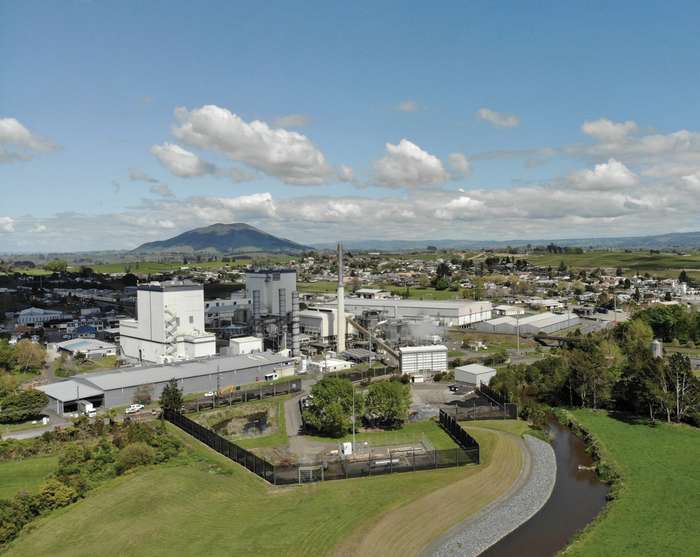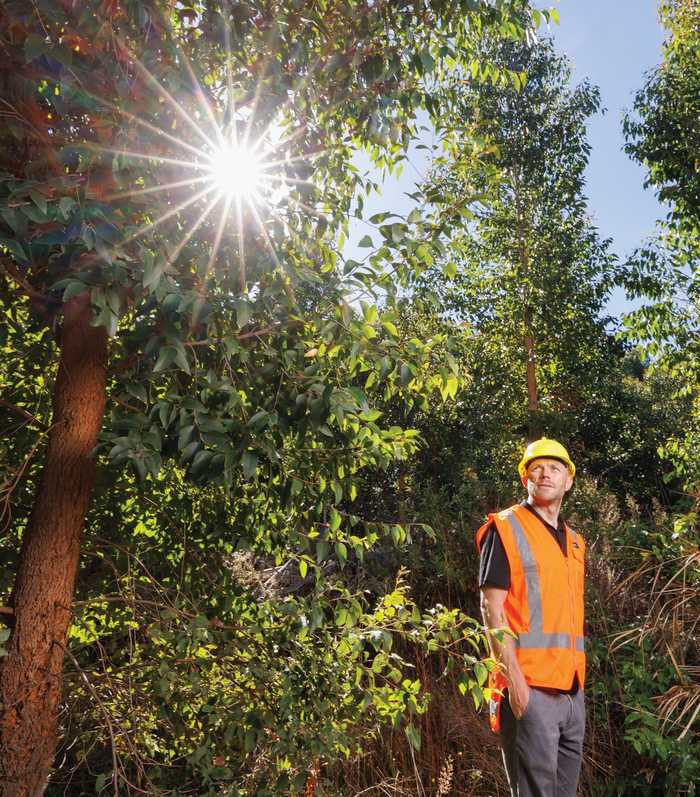Home-grown bioenergy

There is enough energy left over in forestry residues and other woody waste, such as from orchards, surplus pulp logs, and sawmill chip, to entirely replace the heat and energy demands of all New Zealand’s dairy factories, six times over.
New Zealand, with its abundance of hill country, is suitable for growing forests and its expertise in fast-growing plantation forestry could become a world leading example of sustainable bioenergy. A pair of Scion studies titled Strategic Review of Short Rotation Bioenergy Forests (December 2021) and Residual biomass fuel projections for New Zealand (January 2022) tackled the big questions of where our woody bioenergy reserves currently are, how we can grow the supply using short rotation forestry and where that energy is best used.
Having enough feedstock to fuel a bioenergy industry is essentially the green light at the start of a national bioenergy roadmap.
Under the Climate Change Response (Zero Carbon) Amendment Act 2019, the Government has set a 2050 target of net zero greenhouse gas (GHG) emissions (other than biogenic methane). Planting trees is a proven and immediately available way of removing carbon from the atmosphere. If anaged on a sustained yield basis (i.e harvested timber volumes are replaced by new growth) and using best practice forestry, these trees are both a carbon store and a source of endlessly renewable low carbon bioenergy.
Scion bioenergy researcher Peter Hall says replacing fossil fuels with bioenergy alternatives from trees and other biological sources will not only help New Zealand meet our greenhouse gas emission targets and meet international obligations, it will also rejuvenate regional economies and make us less dependent on imported fossil fuels.
Large industries look for sustainable alternatives
While pastoral agriculture and transport are largely visible greenhouse gas emitters, few people give much thought to the energy that is used to power our largest industries. Much of that energy is process heat. That is, any heat generated in the manufacturing of a product. It accounts for 35 percent of our total energy consumption.
This energy is mainly used to power dairy factories, meat processing plants, sawmills, pulp and paper mills and other food processing plants. Process heat makes up around nine percent of our total greenhouse gas emissions. It may not seem like much, but those emissions tend to be clumped around a few large manufacturers rather than distributed over millions of vehicles or livestock. Some of those larger industries are making the switch away from coal and toward more sustainable alternatives.
In September 2020, Fonterra announced that its Te Awamutu dairy processing factory switched from using coal to fuelling the boiler with wood pellets. This is the largest coal to biofuels conversion project to date in New Zealand. The move away from coal at Te Awamutu is part of Fonterra’s plans to have net zero emissions at its manufacturing sites by 2050. It has reduced the cooperative’s national coal consumption by almost 10 percent, saving more than 84,000 tonnes of carbon emissions per year – the same as taking 32,000 cars off the road.
Sixty percent of New Zealand’s process heat demand is met by burning natural gas or coal. Coal is especially problematic. Burnt in boilers, coal is responsible for 26 percent of New Zealand’s process heat greenhouse gas emissions. This is due to coal holding the highest carbon content of any fossil fuel and being more emissions intensive per unit of industrial output than any other source.
Using coal in process heat in New Zealand will come to an end. In April 2021, the government announced that new low-to-medium temperature coal burners are banned in New Zealand from December 31, 2021. This is in line with the Climate Change Commission’s advice on decarbonising New Zealand’s economy.
The ban on new coal boilers did not cover new large sized ones. That was because industries with high-temperature requirements generally use energy in a way that is highly integrated into their plants, meaning there are fewer low carbon opportunities. High temperature boilers used by industries such milk drying plants in dairy factories will remain in place until a 2037 deadline, provided they meet emissions standards. Nevertheless, their lifetime is limited, and alternative fuel sources need to be found as businesses move away from coal and gas and new processing plants are built. Where do those bioenergy sources currently exist and how can we grow the supply?

Residual biomass resources
In January, Hall released a Scion report estimating the potential for woody biomass to fuel New Zealand industry using process heat.
Hall calculated that the biomass from all woody sources in New Zealand is significant and amounts to 181 petajoules (PJ) produced each year. This is more than enough to replace all fossil fuels used in process heat in New Zealand – which is about 109 PJ worth. Hall’s bioenergy estimate includes excess pulp and K grade logs as well as sawmill chip, for which there is already a market, so excluding these sources from the analysis reduces the biomass energy supply to 62 PJ or around 55 percent of the energy needed to displace coal and gas from process heat.
For a range of financial, quality, and environmental reasons, not all woody biomass is recoverable. For example, slash left at a remote and extremely steep skid site may be impractical to extract, or is required to maintain soil heath, biodiversity and productivity. Given reasonable rates of recovery, Hall estimates that 21 to 25 PJ of energy can be supplied each year from forest residues – or around a quarter of the energy currently supplied by coal and gas. Creating bioenergy from other sources such as wood discarded at landfills, bark removed from logs at ports, crop and straw residues, shelterbelt trimmings and orchard waste would add another 8-10 PJ of energy into the national supply. While these sources do not meet all the energy demand currently supplied by fossil sources, these biomass resources lock away carbon over their lifetime, are domestically grown and renewable. With increasing energy and carbon prices, the resources excluded from this analysis, K grade logs and excess pulp logs, may become economically viable for bioenergy use.
If we efficiently use available residual forestry waste to generate process heat, we will still need to grow new forests to keep up with increased demand for process heat in the future and to supply liquid biofuels for transport. The bioenergy forest of the future will need to be harvested at around 14 to 16 years, much sooner than the traditional 26 to 28-year time horizon. These are called short rotation forests.
Short rotation forestry is a solution.
Short rotation forests
Meeting our emissions reduction targets is a race against time – and time is currently winning. More electric cars on the road, reducing livestock numbers and changes in our consumption behaviour will all help. So too will planting more trees and diverting away from fossil fuels to renewable
sources of energy.
New quick-growing forests on a large scale are a way to generate biomass for biofuels quickly to meet interim emissions targets by 2035. Scion scientist Dr Alan Jones realistically points out that this outcome depends on dedicated bioenergy forests grown on a 16-year rotation at high stocking density, given available land.
Any new plantations must grow successfully and deliver biomass of sufficient quantity and quality to meet expected energy demands. They will need to be grown on hill country where they can be deployed economically without displacing current food production.
Planting an additional 240,000 hectares of dedicated bioenergy forest would be the equivalent of one percent of New Zealand’s land area, or three percent of the land currently under sheep and beef. This area would meet the Climate Change Commission’s net zero target by 2050.
A forest of this size would yield a biomass equivalent to 35 PJ annually, or just over a third of that used by fossil sources in process heat. It would potentially displace three million tonnes of CO2 per year from fossil fuels, the same as taking a third of New Zealand’s 4.4 million cars off the road.
The preferred forestry species for short rotation crops are already well-known to New Zealand forestry. Radiata pine, as well as Eucalyptus fastigata and Eucalyptus regnans have rapid initial growth traits favourable for short rotation bioenergy forestry. Of the three, radiata pine is the best understood silviculturally and has the greatest potential environmental adaptability. The other species may have greater suitability within narrower environmental ranges and may be more suitable for select locations. Priority areas for afforestation were identified as: Hawke’s Bay, Gisborne, Central North Island, Northland, Canterbury, Otago-Southland and the Southern North Island.
Jones points out that the devil is in the details.
“No-one has planted short rotation forests at any great scale on New Zealand’s hill country so we will need to make sure that we use the most appropriate tree species with the highest possible yields under the most sustainable intensively grown forestry regime.
“But this will also come with potential risks around disease susceptibility, erosion risk or growth limitations on certain soil types or microclimates. To understand this, we need to get bioenergy forest trials underway yesterday,” says Jones.

